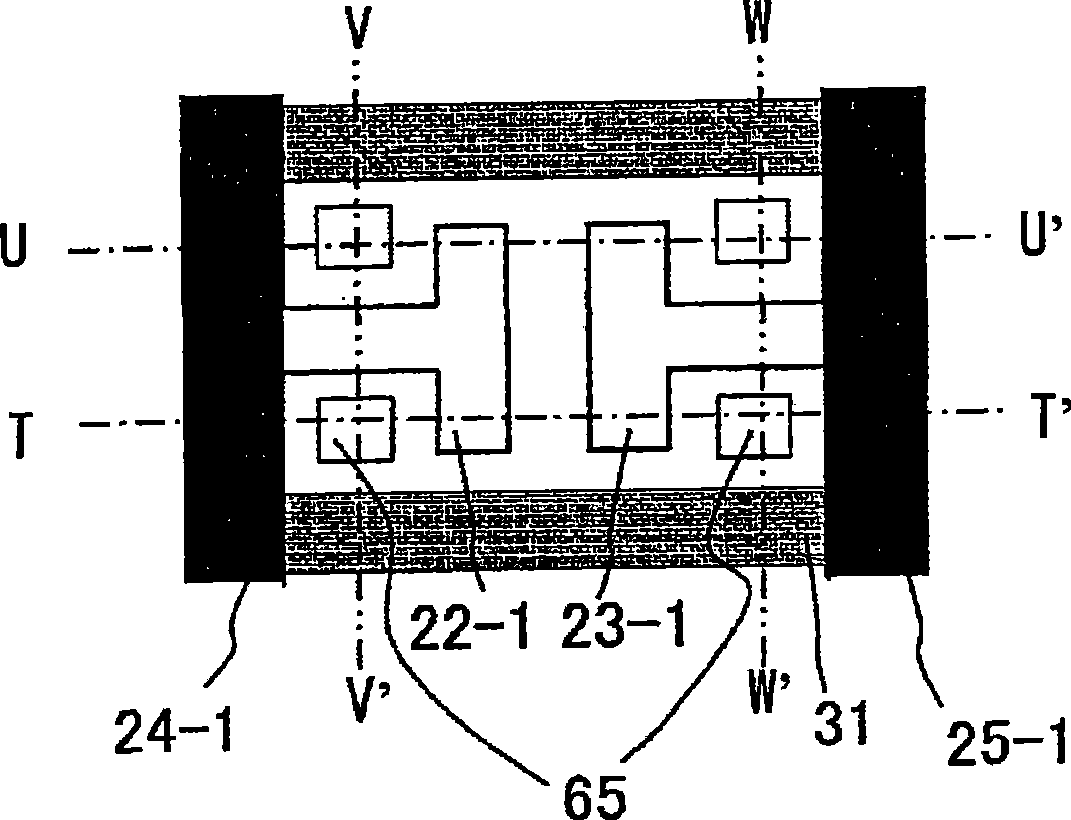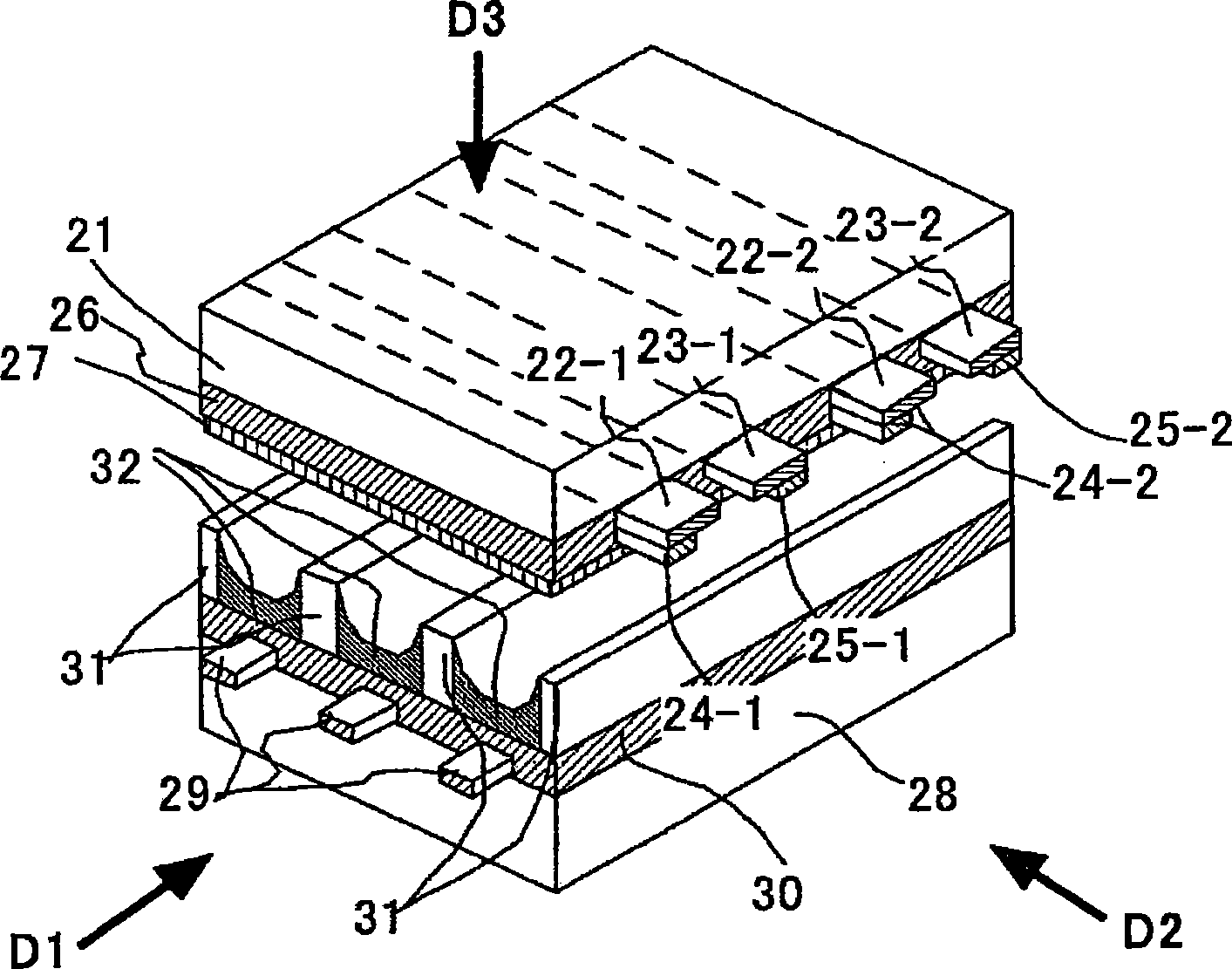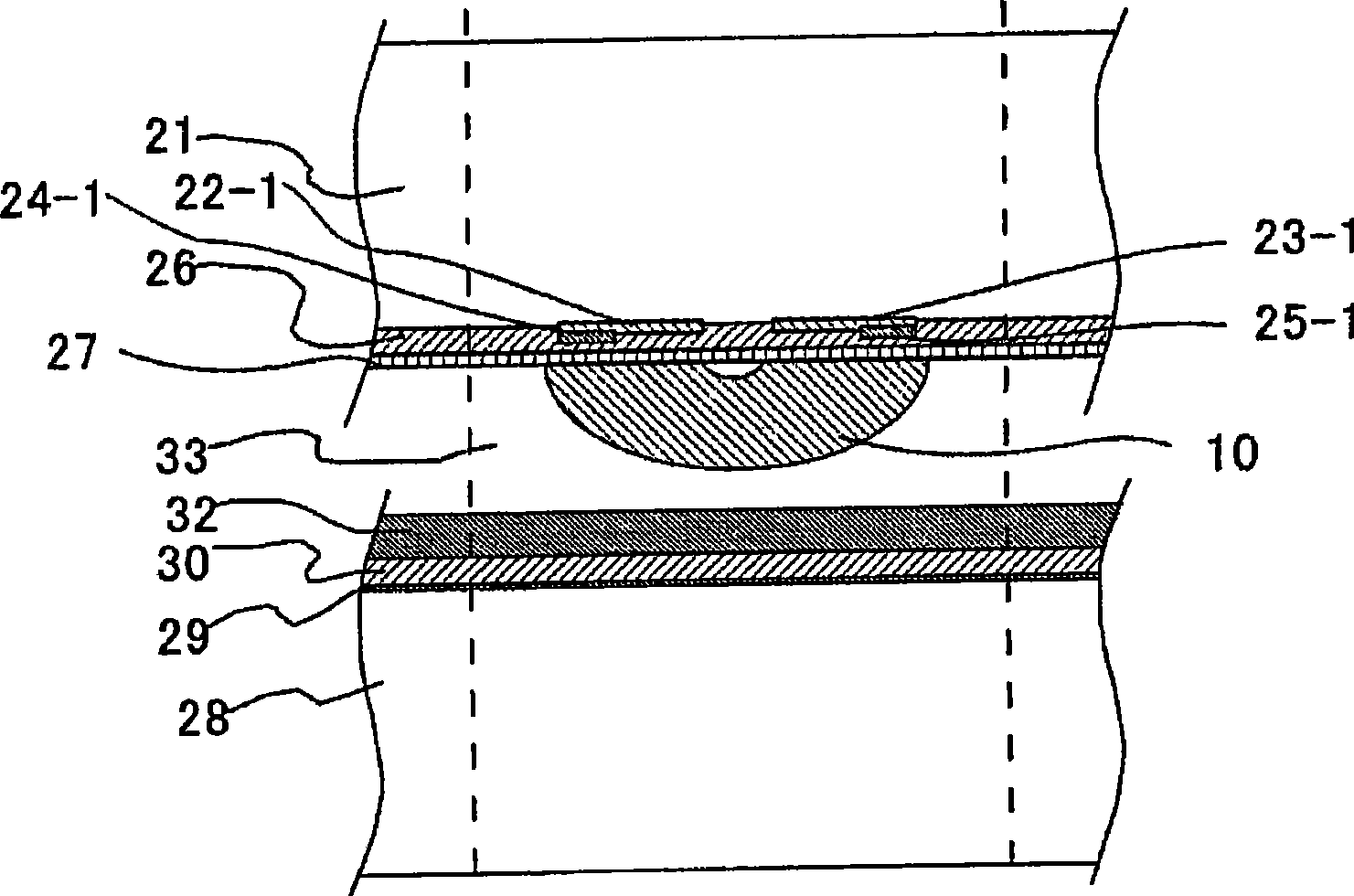Plasma display panel and imaging device using the same
A display panel and plasma technology, which is applied to alternating current plasma display panels, identification devices, static indicators, etc., can solve the problem that the deterioration of address discharge delay cannot be suppressed over time, the deterioration of address discharge delay cannot be improved, and the Problems such as floating electrodes, etc., to achieve the effect of improving address discharge delay, improving deterioration over time, and low power consumption
- Summary
- Abstract
- Description
- Claims
- Application Information
AI Technical Summary
Problems solved by technology
Method used
Image
Examples
Embodiment 1
[0107] figure 1 It shows an example of embodiment related to this invention, and is a figure which shows the electrode structure of one discharge cell. Such as figure 1 As shown in , the electrodes not connected to the circuit are arranged in the discharge cells. This will be referred to as a floating electrode 65 below. The floating electrode also contains only ground (earth) potential. Make a 42-type PDP with this electrode shape, and place Figure 8 A PDP having an electrode structure shown in (A) was evaluated as a comparison object. These PDPs were fabricated with a dielectric layer 26 thickness of 32 microns. In addition, make the X electrode 22-1 and the X bus electrode 24-1, and the closest shortest distance to the floating electrode 65 on the X electrode side is 16 microns. The closest shortest distance of the floating electrodes 65 on the electrode side is 16 μm for the PDP.
[0108] The results are shown in Table 1. The address discharge delay shown in the...
Embodiment 2
[0116] Figure 10 It shows an example of an embodiment of the present invention, and is a diagram showing an electrode structure of one discharge cell. As shown, electrodes insulated from circuits are arranged to float within the discharge cells. The state of the discharge trace portion 62 after the 1000-hour, 70 kHz life test is shown. Figure 10 (A) is a PDP with h1 of 32 microns, Figure 10 (B) is a case of a PDP in which h1 is 15 micrometers.
[0117] As can be seen from the figure, when h1 is 32 micrometers, the discharge trace portion 62 is dyed from the electrode. On the other hand, when h1 is 15 micrometers, the discharge trace portion 62 is substantially overlapped on the electrode. Thus, even if the electrode shapes are the same, if h1 is different, the reason why the shape of the discharge trace portion is different is as follows.
[0118] When a voltage is applied to the X electrode and the Y electrode, a potential is formed in the discharge space through the ...
Embodiment 3
[0129] Figure 16 It shows an example of an embodiment of the present invention, and is a diagram showing an electrode structure of one discharge cell. In this electrode structure, the address electrodes are arranged such that the overlap of the address electrodes 35 facing the Y electrodes 23-1 and the floating electrodes 65 is increased. Figure 16 (A) is in figure 1 The structure of addressing electrodes is added in . A 42-type PDP having this electrode configuration was produced. The dielectric layer 26 has a thickness of 25 microns. A life test of 1000 hours at 70 kHz was performed on this PDP. As a result, the number of seed electrons M after the life test 0 becomes 7.3×10 5 . on the other hand, Figure 15 The structure shown in (B) is a comparative object, and address electrodes are formed so that the address electrodes do not overlap with the floating electrodes 65 on the X electrode 22-1 side. The number of seed electrons M after the life test in this electr...
PUM
 Login to View More
Login to View More Abstract
Description
Claims
Application Information
 Login to View More
Login to View More - R&D
- Intellectual Property
- Life Sciences
- Materials
- Tech Scout
- Unparalleled Data Quality
- Higher Quality Content
- 60% Fewer Hallucinations
Browse by: Latest US Patents, China's latest patents, Technical Efficacy Thesaurus, Application Domain, Technology Topic, Popular Technical Reports.
© 2025 PatSnap. All rights reserved.Legal|Privacy policy|Modern Slavery Act Transparency Statement|Sitemap|About US| Contact US: help@patsnap.com



